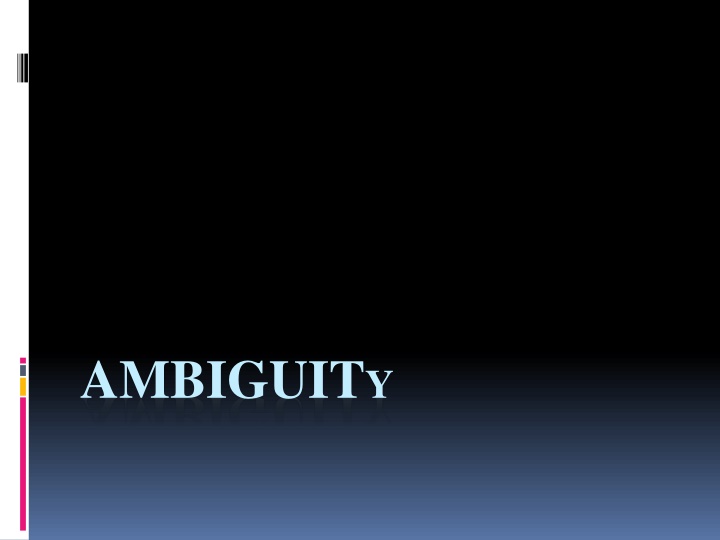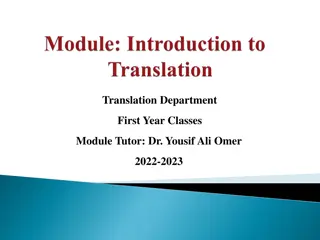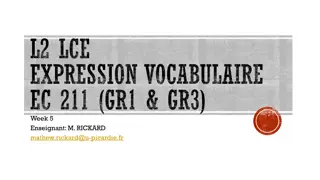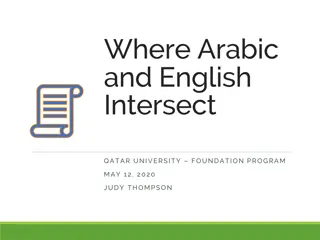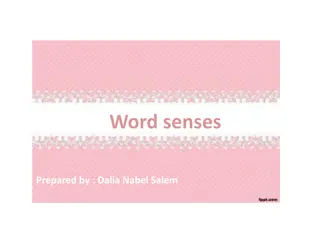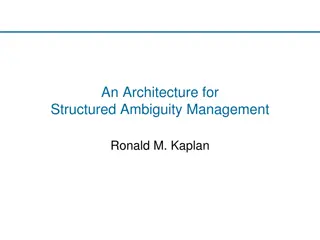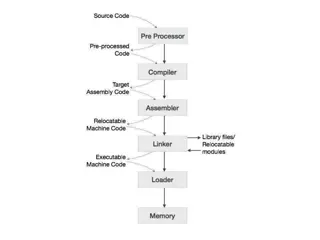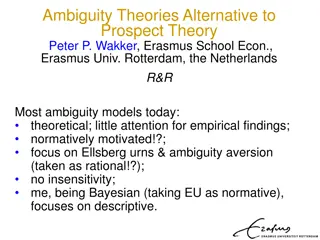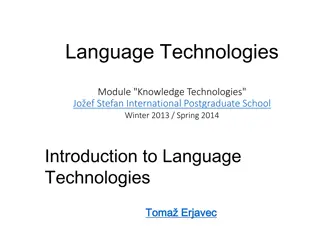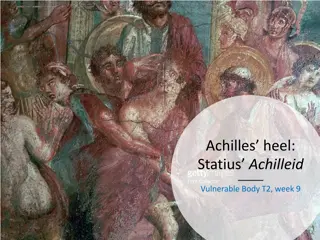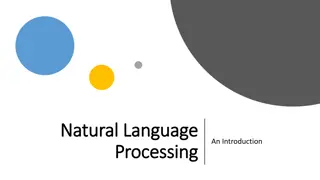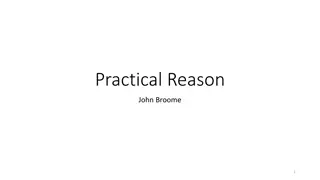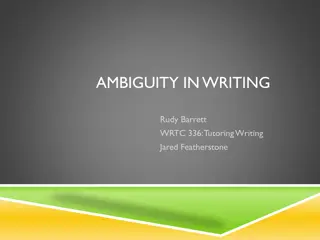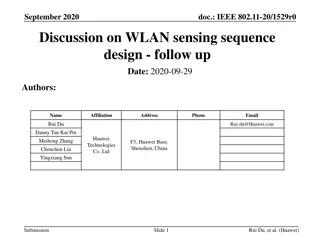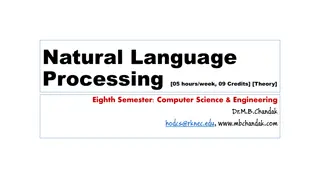Ambiguity in English Language
Exploring the concept of ambiguity in the English language, this article delves into the various meanings words can convey, the challenges of ambiguity resolution, and the types of ambiguity such as lexical and structural ambiguity. Examples of homonymy and homophony are provided to illustrate how words with similar pronunciation or spelling can have different meanings, contributing to the complexity of language interpretation.
Download Presentation

Please find below an Image/Link to download the presentation.
The content on the website is provided AS IS for your information and personal use only. It may not be sold, licensed, or shared on other websites without obtaining consent from the author.If you encounter any issues during the download, it is possible that the publisher has removed the file from their server.
You are allowed to download the files provided on this website for personal or commercial use, subject to the condition that they are used lawfully. All files are the property of their respective owners.
The content on the website is provided AS IS for your information and personal use only. It may not be sold, licensed, or shared on other websites without obtaining consent from the author.
E N D
Presentation Transcript
According to (Klkaya, 2007) nearly all English words can express more than one meaning. This statement is in line with the figures of the American Heritage Dictionary, which provides forty different meanings conveyed by the word "take", some of those meanings are intimately associated, while others have irrelevant senses. One more example of polysemous words in English is "hold", where OXFORD dictionary lists up to thirty-seven senses of this word. Such wide range of meanings of a single word is a leading factor of creating ambiguity.
Ambiguity resolution can be sometimes a challenging task, involving two main strategies, first activating all the meanings conveyed by theambiguous word. Second, building contextual However, some linguists cast doubt on the usefulness of context in clearing off ambiguity, indicating that context help only activate senses associated with it while ruling out all othersenses oftheambiguous word. relationship.
Two types of ambiguity are distinguished; first, Lexical and structural ambiguity. Lexical ambiguity is also termed as semantic ambiguity. It is further subdivided into three types as follows: 1-Homonymy: Defined as a semantic relationship occurs when two words share the same pronunciation or spelling but have two different meanings. Homonymy can appear in the form of two words spelled the same but pronounced differently, which called "homography". Homonymy is also exhibited in the form of two words articulated in the exact manner but with dissimilar spelling, which is termed as " homophony.
The lexical relationship, e.g homography is illustrated in the examples below. A- Jack and Smith are close friends. B- Please, close the door after leaving the class. The word "close" is used in sentences (A and B) above. In (A), "close" is articulated as "s " conveying the meaning of intimacy while, in (B) "close" is articulated as "z " communicating the sense of " shut". It could be said that " close" inAand B are homographs. .
C-Tom prefers meat with rice on lunch. D- Edward did not meet his old friends for ages. The word " meat" is used in sentences (C and D) above and pronounced the same in both sentences but the spelling is varied. Thereby "meat" in (Cand D) arehomophones.
The ambiguity occurs when a word expresses multiple senses, varied from one context to another. second type polysemy of lexical which is
E-Liza runs three kilometers a day. F-John runs his own business
Categorical ambiguity: words bear slight difference in meaningdue tohaving variedsyntacticcategories. This type is actually very common in English as a great deal of wordscan serveasa nounand averb simultaneously. Some of those differentiatedby stressplacement;nounsassignstresson the first syllable, whereas verbs place stress on the second syllable as exhibited in the words (present, record, import, increase, perfect, permit etc .) Other words, change in meaning does not have to do with stress when a word used in two different syntactic classes e.g. sink. The meaning of sink can only be understood on contextualground. words can only be
Mine is a long and sad tale, said the Mouse, turning to Alice and sighing. It is a long tail, certainly, said Alice, looking with wonder at the Mouse s tail, but why do you call it sad? (Lewis Caroll, Alice s Adventures in Wonderland)
ambiguity 1. homonyms 2. homophones Ex : to,too,two (will-will) -Homonyms may create ambiguity
She cannot bear children -(bear) (bare) flour-flower Ground-ground grind earth
structural ambiguity The second type of Ambiguity is structural or syntactic ambiguity. It is generally agreed that "An utterance is structurally ambiguous when it can yield more than one syntactic interpretation or when it implies more than one syntactic relationship between constituents within a structure"
An utterance is regarded structurally ambiguous not because of expressing variety of meanings but due to rules of grammar or order of words in a sentence.
three primary types of Attachment ambiguity. -Gap-finding ambiguity -Analytical ambiguity structural ambiguity:
She never saw a dog and didnt smile. There are the boys that the police debated about fighting The manager approached the boy smoking a cigar
In English grammar, syntactic ambiguity (also called structural ambiguity or grammatical ambiguity) is the presence of two or more possible meanings within a single sentence or sequence of words, as opposed to lexical ambiguity, which is the presence of two or more possible meanings within a single word. The intended meaning of a syntactically ambiguous phrase can generally although not always be determined by thecontextofits use.
How Ambiguity Leads to Misunderstanding Syntactic ambiguity generally results from poor word choice. If care is not used when selecting phrases that taken in a connotative rather than a denotative context may have more than one meaning, or if the sentences in which they're used are not properly constructed, the results can often be confusing for readers or listeners
The professor said on Monday he would give an exam. This sentence means either that it was on Monday that the professor told the class about the exam or that the exam would Monday. be given on
One of the goals of linguistic study is to describe and to make explicit what native speakers know implicitly.
Comedians, jock-tellers, adverisers make use of word-plays cause by ambiguity.
The women of our country will be forgotten no longer forgotten men and
The headline above is an example of grammatical ambiguity. The noun phrase (The forgotten men and women of our Country) is considerd as ambiguous one, since it has two different forms which make the sentence has two different meanings .
The forgotten men Np Art AdjP Adj Noun The forgotten men
The forgotten men and women of our country Np Np Np Conj Art AdjP Noun Pp Adj Noun Prep Poss Noun The forgotten men and women of our country
